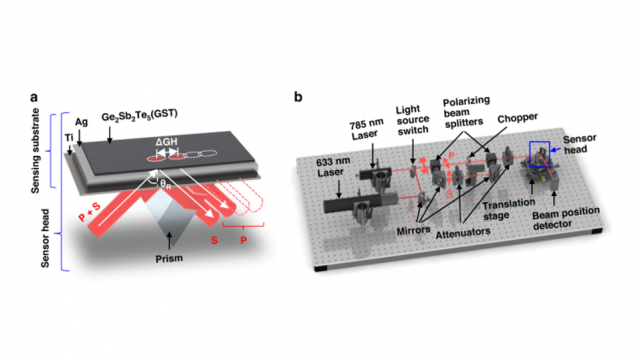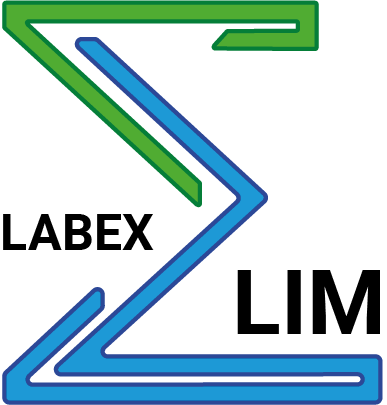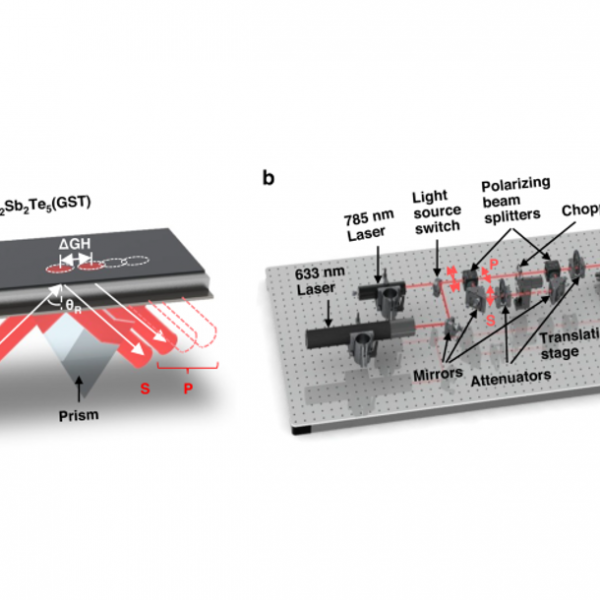
Label-free biosensing with singular-phase-enhanced lateral position shift based on atomically thin plasmonic nanomaterials
Rapid plasmonic biosensing offers great potential in the fields of early disease diagnosis and molecular biology research. However, it was still difficult for conventional plasmonic sensors to achieve higher sensitivity without secondary amplification such as plasmonic nanoparticles. To solve this problem, a team of researchers from L2n (CNRS- University of Troyes), the Biomedical Engineering Department of the Chinese University of Hong Kong and the XLIM Research Institute (University of Limoges – CNRS), have developed a plasmonic biosensor based on phase singularity-enhanced lateral position shifting. This work builds on research supported by LABEX ∑-LIM. This singularity appears as an abrupt phase delay at the dark point of reflection from the resonant plasmonic substrate, leading to a giant position shift on the reflected beam. This new configuration achieved a record largest position shift of 439.3 μm measured in calibration experiments with an ultra-high sensitivity of 1,72 x 10 8 nm · RIU-1 (refractive index unit).
In targeted biosensing experiments, the optimized sensor succeeded in detecting small cytokine biomarkers (TNF- and IL-6) with the lowest concentration of 1 x 10 x 16 M. These two molecules are key pro-inflammatory cancer markers in clinical diagnosis, which cannot be directly monitored by current clinical techniques.
Figure: Principle and optical setup of singular phase enhanced plasmonic sensor.
About the publication
Journal : Nature – Light: Science & Applications volume 13, Article number: 2 (2024)
Date of publication: 01 Janvier 2024
Auteurs : : Shaodi Zhu, Shuwen Zeng*, Cyrille Vézy & Rodolphe Jaffiol, Sik-To Chan (Light, Nanomaterials & Nanotechnologies (L2n), CNRS-UMR 7076, University of Technology of Troyes, 10000, Troyes, France), Ho-Pui Ho (Department of Biomedical Engineering, The Chinese University of Hong Kong, Shatin, New Territories, Hong Kong, China), & Aurelian Crunteanu (XLIM Research Institute, UMR 7252 CNRS/University of Limoges, 123, Avenue Albert Thomas, Limoges, France),
Lien : https://www.nature.com/articles/s41377-023-01345-6


